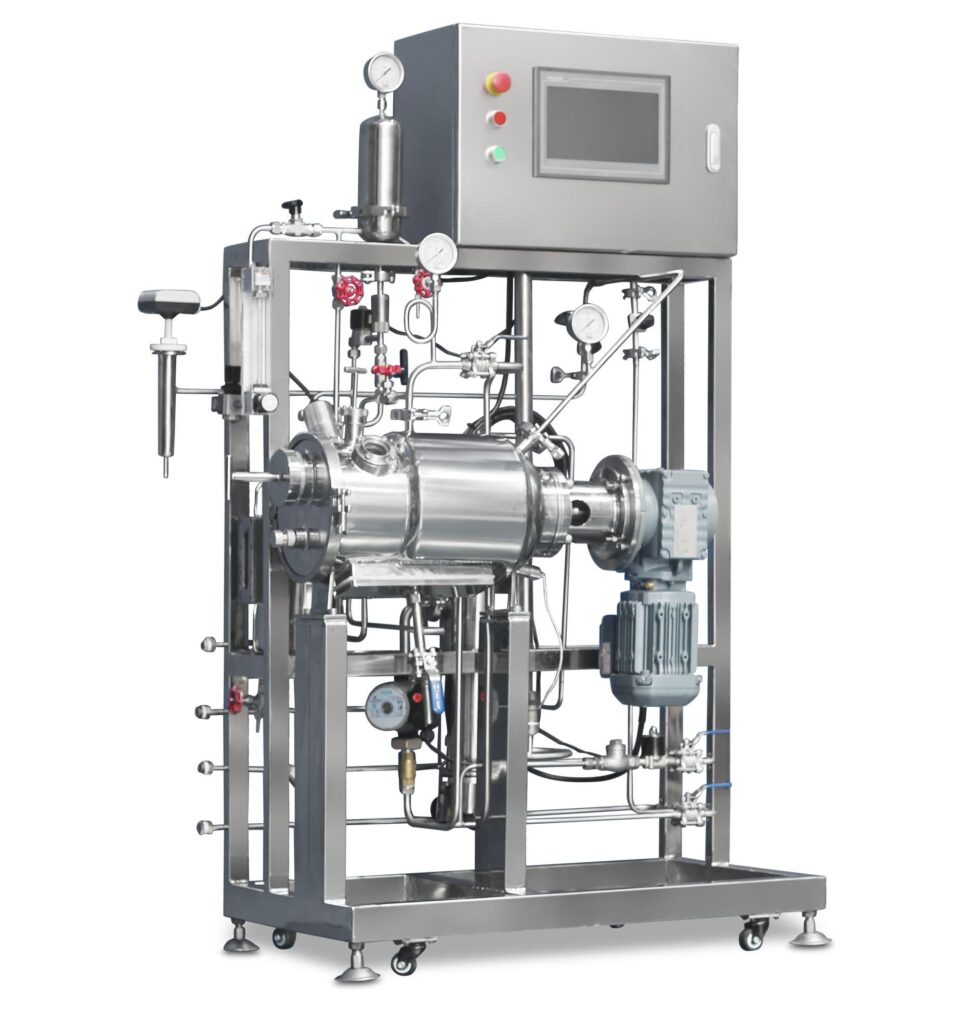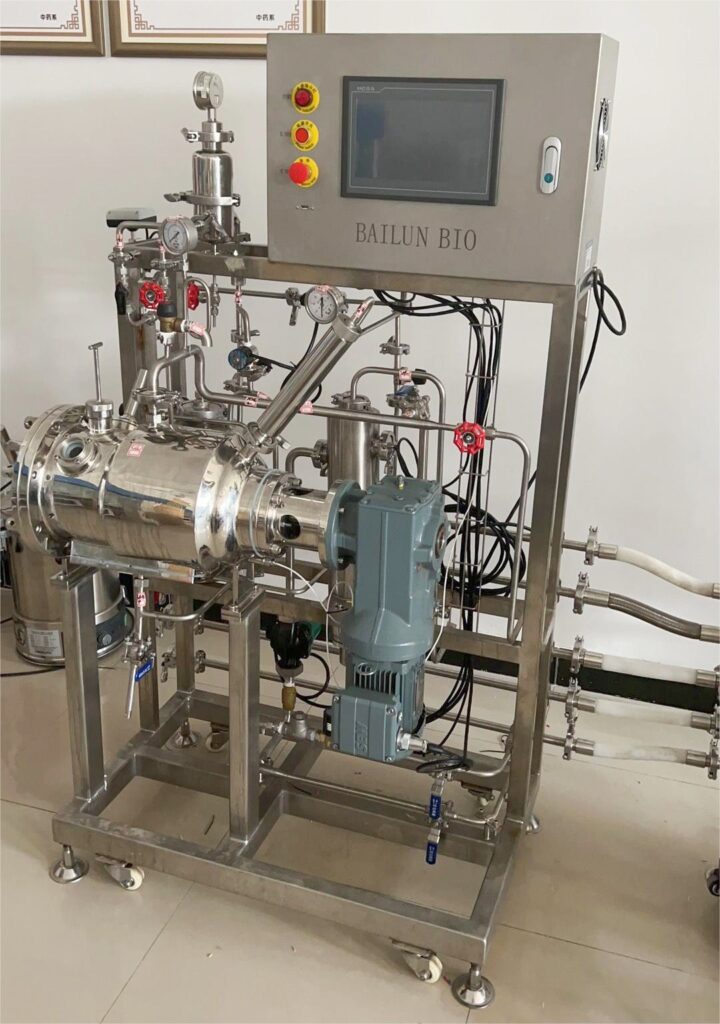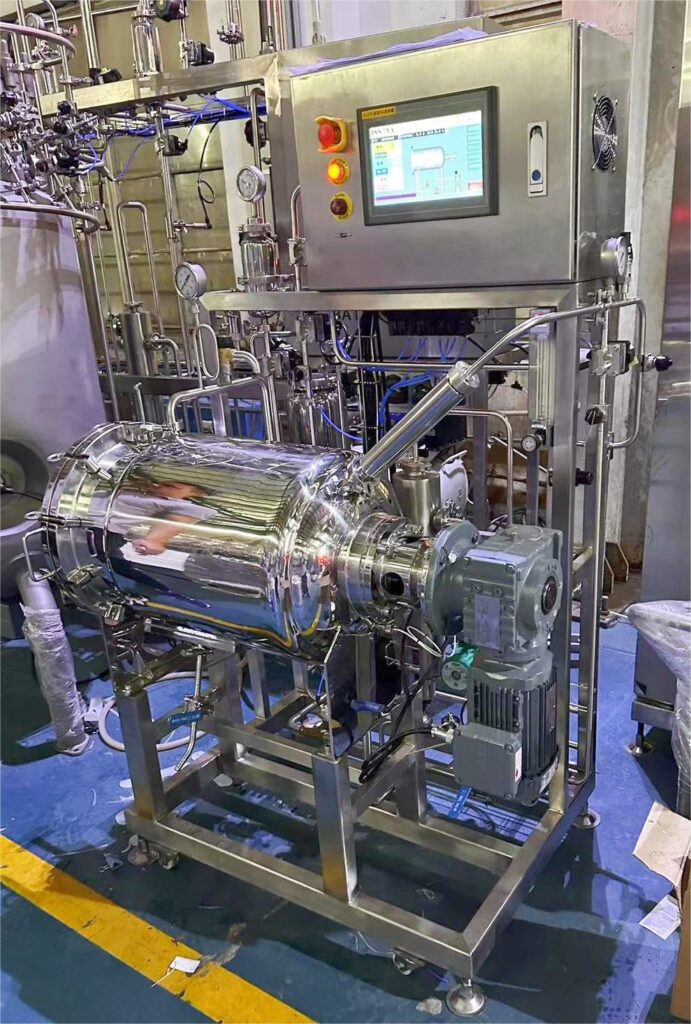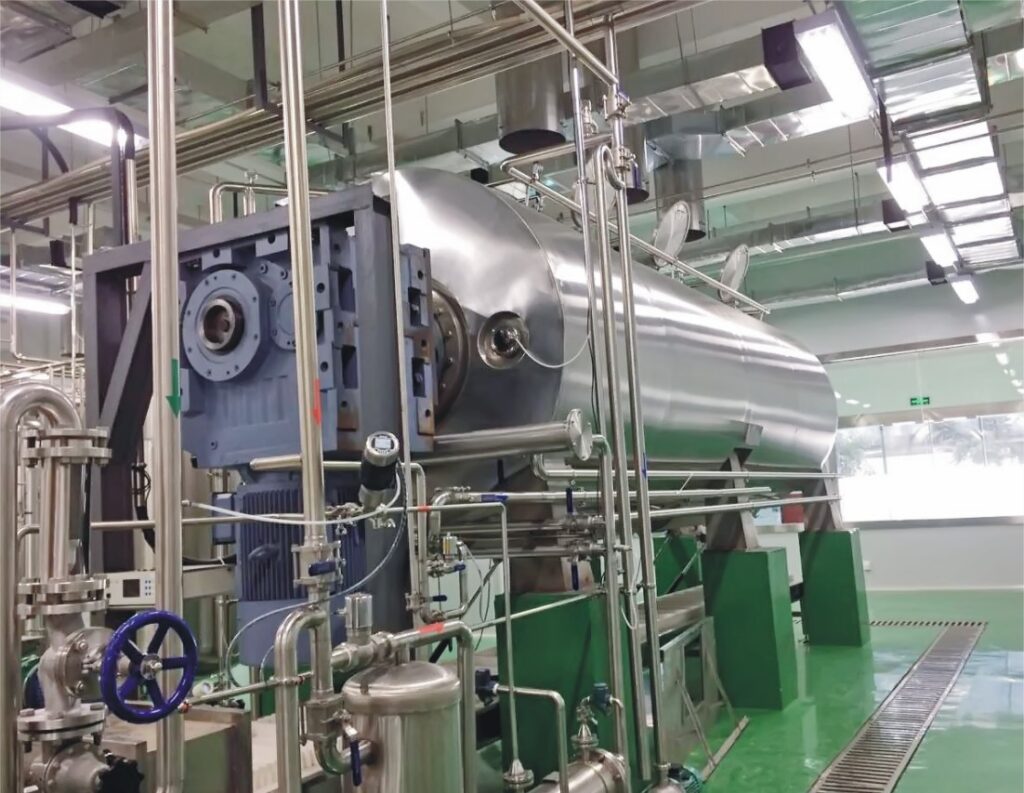
Closed solid-state fermentation technology
Solid-state fermentation (SSF) is a fermentation method of microorganisms on a solid matrix with no or almost no free water. The matrix not only provides nutrients and a growth environment for microorganisms, but also has a continuous gas phase and a small amount of liquid water, making the system continuously stable.
A layer of water film is attached to the surface of the solid matrix, but the liquid phase is not continuous, and most of the gaps are filled with gas phases. The water in the system is mainly adsorbed between the solid matrix particles. Therefore, in the absence of or very little free water, microorganisms can still use enough water in the solid matrix to complete growth and metabolism.
The closed solid-state fermentation system is a space that provides a suitable environment and conditions for the growth and metabolism of microorganisms on a solid matrix. It can prevent the entry of external microorganisms and the spillover of internal substances. It must be non-toxic, vibration-resistant, and not easy to corrode.
It must have a good stirring, ventilation, heat dissipation, and cooling system, and be able to perform aseptic operations. Due to the nature of the substrates and organisms used, the mixture in the closed solid-state fermentation system is usually uneven, which is not conducive to heat and mass transfer. Therefore, the use of different types of closed solid-state fermentation systems can solve the corresponding problems.

01 Disk-type solid-state fermentation system
It is generally composed of multiple trays stacked in a closed culture room or incubator, with a certain gap between the trays to allow air to circulate between the trays and the surface of the fermentation matrix. The system does not contain a stirring device or forced ventilation measures, achieving true static solid-state fermentation.
The fermentation system has a simple structure, is easy to make and low cost, but has poor heat dissipation. During the fermentation process, the growth and metabolism of microorganisms will generate a lot of heat, and the disk-type solid-state fermentation system without forced ventilation measures will lead to the appearance of temperature gradient differences, affecting the quality and yield of the final product.
02 Packed bed solid-state fermentation system
Its main body is a vertically placed cylindrical cylinder with a porous plate or screen at the bottom, which is used to support the fermentation matrix to form a column bed of a certain height. The upper and lower ends are respectively provided with air inlets and outlets for air circulation to maintain the normal progress of fermentation.
The fermentation system is efficient, easy to operate, simple in structure, and adopts forced ventilation measures to enhance the heat and mass transfer processes, but the mass transfer coefficient and heat transfer coefficient are relatively low. As the bed height increases, the ventilation rate decreases, and the temperature gradient in the fermentation system gradually increases. When the temperature exceeds a certain value, the growth and metabolism of microorganisms are inhibited, which will cause damage to the bacteria.
In addition, although forced ventilation can promote evaporation through air circulation and thus achieve temperature control, excessive ventilation will cause the fermentation matrix to become dry, and excessive water loss is not conducive to the fermentation process.

03 Rotary drum solid fermentation system
Its main body is a horizontal or inclined cylinder filled with fermentation matrix. Oxygen is introduced from the top and circulates inside the fermentation system to meet the growth and metabolism needs of microorganisms. The closed design can prevent the overflow of hot and humid air and ensure good fermentation sanitary conditions.
As the cylinder rotates, the fermentation matrix can be turned and mixed, which is conducive to the transfer of oxygen and heat, improves the fermentation efficiency, and also prevents the matrix from adhering to the inner wall of the fermentation system. However, if the rotation rate is too high, the large shear force generated will hinder the growth and metabolism of microorganisms and even cause death.
04 Stirring drum solid fermentation system
It is similar to the basic structure and operating parameters of the rotary drum solid fermentation system. The difference is that the main body of the stirring drum remains stationary, while the bed is dynamic.
The fermentation system is equipped with a stirring device on the central axis to keep the fermentation matrix mixed evenly through continuous or intermittent stirring, avoid the fermentation matrix from condensing into blocks, and improve heat transfer, ventilation and uneven water distribution. It can promote the growth and metabolism of microorganisms, increase the transfer and utilization of oxygen and nutrients, and improve fermentation efficiency and yield.
05 Stirred bed solid fermentation system
It is similar to the packed bed solid fermentation system, but the difference is that the stirred bed has a stirring device embedded in the bed layer, which can intermittently or continuously stir the solid fermentation matrix.
This design makes the fermentation matrix more evenly mixed, and the internal ventilation regulates the humidity inside the fermentation system, achieving a more uniform fermentation effect with internal heat dissipation. Therefore, in the design and operation of the stirred bed, the design and operation of the stirrer is also an important consideration.

06 Shaking drum solid-state fermentation system
It is a fermentation equipment that causes stirring through its own movement. It is mainly composed of three horizontally placed perforated inner cylinders, perforated outer cylinders and the outermost solid shell outer cylinder. The fermentation matrix is located between the two perforated cylinders and is loosely arranged.
During the fermentation process, air and a small amount of water are introduced into the innermost cylinder, the air moves radially, and the water penetrates downward into the bed. At the same time, the two cylinders outside the fermentation system rotate around the central cylinder to promote mixing in the bed and achieve basic mixing of the fermentation matrix.
In this fermentation system, the flowing air and water can control the temperature, humidity and oxygen concentration, which is conducive to the growth and metabolism of microorganisms. However, the stirring effect caused by its own movement is not ideal and needs further improvement.
07 Gas-solid fluidized bed solid-state fermentation system
It consists of a vertical chamber with a porous bottom plate. The gas is introduced from the bottom of the fermentation bed. A disintegration device is also installed at the bottom to disintegrate the agglomerated materials and suspend them, thereby improving the fermentation effect of the gas-solid fluidized bed.
The fermentation system matrix is evenly mixed, which can prevent temperature and humidity gradients during the fermentation process, and is conducive to the control of fermentation process parameters. The ventilation, mass transfer, and heat transfer effects are excellent, and it is also conducive to the growth of aerobic microorganisms.
However, if the viscosity of the fermentation matrix is too high or the particle size is inconsistent, it will lead to differences in particle suspension during the fermentation process. It is necessary to adjust the fluidization behavior of the bed in the fermentation system by optimizing operating parameters such as bed thickness and air flow rate.

